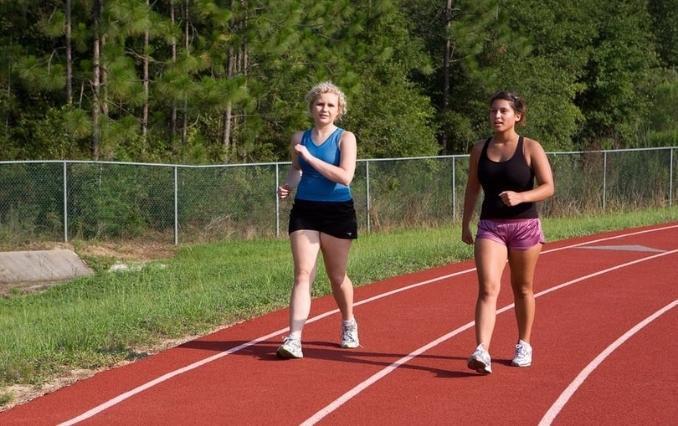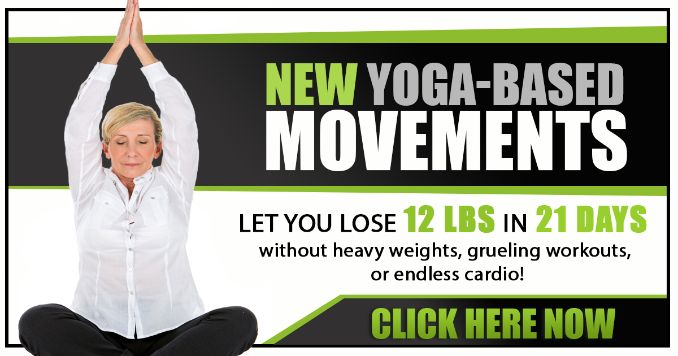
What is Water Aerobics?
A popular option at most fitness centers with a pool, water aerobics is a style of fitness class where participants perform aerobic exercises in the rough waist to chest-high water. Aerobics means “with oxygen” and refers to exercises that can be completed while the cardiovascular system can simultaneously take in enough oxygen to sustain the intensity level of the exercise without needing to pause for rest. Water aerobics is one such lower-intensity-level routine involving exercises like water walking, underwater kicks and punches as well as the use of equipment like water weights, kickboards, and pool noodles to increase intensity.
Why is It Attractive?
Water aerobics offers the ability to work toward improved cardiovascular and muscular strength in a low-impact environment. Because the water creates a buoyant environment surrounding the body, participants are free to move in ways that would prove difficult outside of the water. For example, those with joint pain can perform jumping, jogging, and kicking exercises in the water that would be painful if done at full impact on the land. For this reason, water aerobics has become a popular choice for older populations who tend to require lower-impact forms of exercise.
Some additional considerations for why water aerobics can be an attractive choice is the ability of the water to keep body temperature low (not getting hot and sweaty during your workout). The reduced stress that can come from time spent in the water and the absence of post-exercise soreness. There is also little risk of injury which makes water aerobics a safe choice for those concerned about sustaining injuries during higher-intensity exercise.
Though water aerobics can be a great choice for some. It’s important to dive deeper into the real, tangible benefits of this form of exercise as well as any shortcomings. If you are going to spend time and money on exercise classes, knowing that you are getting results should be priority number one.
What Are the Real Benefits?
Although all forms of exercise have the natural benefits of improved physical and mental fitness. The medically backed benefits of any form of exercise are more revealing of just how impactful an exercise can be. In the case of water aerobics, there is ample science to back up the benefits to specific populations.
According to the Centers for Disease Control and Prevention (CDC), water-based exercises, in particular. Also can help people with chronic health conditions like arthritis by improving the use of affected joints without worsening symptoms. The buoyant environment of the pool allows for low-impact movement of the joints. This is especially beneficial to those who suffer from degenerative joint diseases. By allowing participants of water aerobics to perform cardiovascular and strength training exercises without risking further damage to the affected joints.

The CDC also backs up the well-studied mental benefits of water-based exercise. Specifically citing the improved mental health of both men and women suffering from fibromyalgia by reducing anxiety and decreasing depression. Expectant moms can also expect to see the benefits of water aerobics in the form of improved mental health and physical health for both mom and baby. Finally, older adults who participate in water-based exercise tend to see an improved quality of life. Also, it decreased disability while post-menopausal women, in particular, can expect improved bone health.
Regardless of the health condition, anyone can expect to see some benefit from water aerobics. The Aquatic Exercise Association reports that you can expect to burn 400 to 500 calories per hour when exercising in water. Because water offers about 12 times the resistance of air. It also improved muscle strength can result from the use of water-resistant exercises. Using hand-held paddles, foam noodles, and rings, and kickboards can add further resistance to increase the intensity of an aquatic workout.
If you fall into one of the above categories, you’ll likely see some real benefit from participating in a water aerobics class. Even those with no imminent risk of joint damage can certainly get a worthwhile workout in the water. However, it’s important to understand at which point your water workouts might not be doing you justice. It may be time to consider some other forms of exercise to get the most beneficial impact on your time and calories spent exercising.
What Are the Shortfalls?
As with any form of exercise, your body gets used to certain speeds, weights, intensity levels and styles of motion. If you think about the phrase “practice makes perfect,” it sounds like a real positive. However, when applied to the concept of exercise. Practicing a move to the point of perfection means you are no longer seeing improvement. In short, your body sees much more benefit in varied types and intensities of exercise. If water aerobics is your main form of exercise. You might be selling yourself short on just how much stronger and fitter your body can become by performing other kinds of exercise. Here’s why water aerobics isn’t enough for most people to achieve and maintain a favorable fitness level:
- The water resistance will never increase. Although you can increase resistance with floats. Even these devices will become easy to use in a short amount of time. Once your resistance increases are easy, you have no further course of action to up the intensity of your workouts. This means that those who are completely new to exercis. Those who cannot perform typical exercises outside of the water. It will likely see a rapid improvement in their ability to perform at the intensity level. Water provides but won’t continue to see improvement without taking their workout on land.
- You aren’t bearing your own weight. For the very same reason that water-based exercise is a good low-impact workout. The buoyancy of the water disallows your body the practice of bearing its own weight during strenuous activity. Weight-bearing exercises force you to work against gravity and are far superior to non-weight-bearing exercises at increasing bone and muscle strength.

Alternative Workouts and Why They’re Better
Weight-bearing exercises are vital to the overall health and wellness of the human body. Unless you have specific restrictions that do not allow for weight-bearing exercise. Incorporating them into your fitness routine will increase your quality of life greatly. Increased bone density and strength, increased muscle strength, and improved bodily functionality are among the many benefits of regular weight-bearing exercise.
It’s important to remember that even weight-bearing exercises can be done in a low-impact format. The main difference between water workouts and land workouts is the nearly infinite opportunity for improvement that nonwater workouts allow. With weight-bearing exercise, you can always go faster, lift more, climb higher or hold for longer.
Some examples of weight-bearing exercises include walking, hiking, yoga, dancing, sports, and jumping rope. A study on the effects of weight-bearing versus nonweight-bearing exercise on participants with osteoarthritis. They showed that weight-bearing exercises improved what’s called position sense. Which may improve the ability to perform more complicated tasks like walking in figure eights or on spongy surfaces. Basically, the weight-bearing version of the same exercise showed an increase in the joint’s ability to perform more challenging moves.
Conclusion
If you love water aerobics, there’s certainly no reason to discontinue your practice. However, water aerobics alone have very little upward mobility for your fitness. While it has proven its benefit for certain populations who have joint health concerns. Water aerobics should perhaps be used more as a segue to re-entering the world of weight-bearing exercise than as a permanent solution to exercise concerns. Because your body achieves more and better benefits from weight-bearing exercises like walking. Including both forms of fitness is a great way to ensure you see improvement while keeping your joints happy and healthy.
For a joint-friendly workout, check out the Low Impact High Result program, here!

